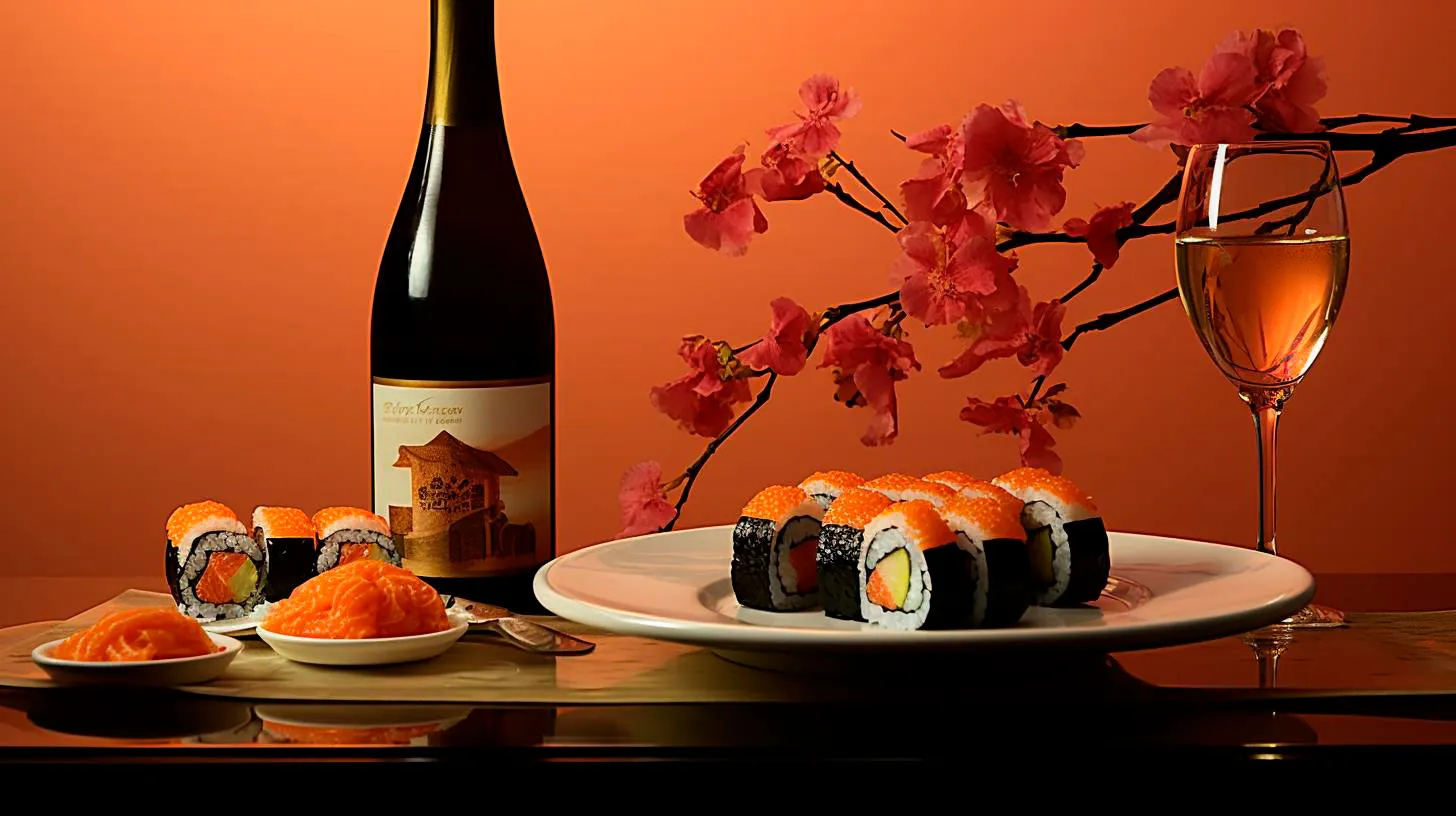The Art of Sushi: Rediscovering Tradition
In this article, we will delve into the history, techniques, and health benefits of sushi while exploring its modern manifestations.
A Brief History
The roots of sushi can be traced back to the fourth century in Southeast Asia, where it was initially developed as a means of preserving fish by fermenting it in rice. Over time, it evolved into a popular staple in Japan, where the fermentation process was replaced with the use of vinegar. The Edo period (17th to 19th century) witnessed sushi’s transformation into the bite-sized delicacy we know today.
Sushi started gaining international recognition after World War II when Japanese cuisine became popular worldwide. Today, sushi is an integral part of many cultures, and its exquisite preparation and presentation make it a sensory experience beyond taste alone.
The Craft of Sushi
Sushi making is an intricate craft that demands precision, technique, and a profound understanding of ingredients. Here are some key aspects to appreciate:
- Quality Ingredients: Sushi is heavily reliant on the freshness and quality of its ingredients. The fish, vegetables, and rice must be meticulously selected to ensure exceptional taste and texture.
- Skillful Cutting Techniques: Knife skills play a crucial role in sushi preparation. Chefs undergo years of training to master the precise cuts required for each type of sushi, like sashimi (thinly sliced raw fish) or nigiri (fish over rice).
- Attention to Detail: The artistry of sushi lies in its presentation. From the arrangement of colors to the meticulous garnishes, every aspect of the plate is carefully considered to create an aesthetically pleasing dish.
The Health Benefits
Beyond its delectable taste, sushi offers various health benefits:
- Omega-3 Fatty Acids: Many sushi ingredients, especially fatty fish like salmon and tuna, are rich in omega-3 fatty acids, which are known to promote heart health and reduce inflammation in the body.
- Protein-rich: Sushi is an excellent source of protein, making it a popular choice for fitness enthusiasts. This macronutrient aids in muscle growth, repair, and maintaining a healthy metabolism.
- Low-Calorie Option: Sushi is relatively low in calories compared to many other fast food options. By choosing sushi, you can satisfy your taste buds without compromising on your health and weight management goals.
- Aids Digestion: The pickled ginger served with sushi acts as a palate cleanser, aiding digestion and refreshing the taste buds between different types of sushi.
The Modern Sushi Experience
Sushi has undergone innovations and adaptations over time, resulting in varied forms that cater to diverse palates. Some significant modern sushi trends include:
- Fusion Sushi: This novel approach combines traditional sushi with elements from other cuisines. It blends ingredients, flavors, and cooking techniques, offering exciting combinations like sushi burritos or sushi burgers.
- Vegan and Vegetarian Options: Sushi has evolved to cater to different dietary preferences. Vegan and vegetarian options often feature ingredients like avocado, cucumber, and sweet potato, providing a delightful culinary experience for plant-based eaters.
- Sustainable Sourcing: With growing concerns about overfishing and the environment, sustainable sushi is gaining prominence. It emphasizes responsibly sourced seafood to protect marine ecosystems and support sustainable fishing practices.
Key Takeaways
Sushi is not just a meal; it is an artistic journey that represents the epitome of Japanese culture and culinary expertise. Here are the key takeaways from our exploration:
- Sushi originated in Japan and has a rich history dating back centuries.
- The craft of sushi involves the use of high-quality ingredients, skilled cutting techniques, and meticulous attention to detail.
- Sushi offers several health benefits, including omega-3 fatty acids, protein content, and being a low-calorie option compared to many fast foods.
- Modern sushi trends include fusion sushi, vegan and vegetarian options, and sustainable sourcing.
Intrigued? It’s time to embark on a sushi adventure and rediscover the tradition behind this exquisite art form.
Sushi for Health: A Modern Approach to Culinary Wellbeing
With its unique flavors and presentation, sushi has been captivating food enthusiasts for centuries. Moreover, this traditional Japanese dish has evolved over time to embrace modern approaches to culinary wellbeing.
The Health Benefits of Sushi
Sushi is not just a delightful delicacy; it also offers numerous health benefits. Here are some key takeaways to highlight the advantages of adding sushi to your diet:
- Rich in Nutrients: Sushi is packed with a variety of nutrient-rich ingredients like fish, vegetables, seaweed, and rice. These provide essential vitamins, minerals, and omega-3 fatty acids, contributing to overall wellbeing.
- Low in Calories: Sushi is known for its low-calorie content compared to many other popular dishes. This makes it an excellent choice for weight-conscious individuals looking to indulge without guilt.
- Heart-Healthy: The omega-3 fatty acids found in fish, such as salmon and tuna, are renowned for promoting heart health. Regular consumption of sushi can help reduce the risk of heart disease and lower cholesterol levels.
- Source of Protein: Fish is an excellent source of high-quality protein, supporting muscle growth and repair. Protein also helps in maintaining healthy skin, hair, and nails.
- Antioxidant Boost: Sushi often includes antioxidant-rich ingredients like vegetables, ginger, and wasabi. These antioxidants protect cells from damage caused by harmful free radicals, helping to strengthen the immune system and prevent chronic illnesses.
The Modern Spin on Sushi
While traditional sushi remains a popular choice, chefs and food enthusiasts have embraced modern approaches to sushi, promoting culinary wellbeing without compromising taste. Here are some exciting developments in the world of sushi:
- Vegan and Vegetarian Varieties: Sushi has expanded beyond its fish-oriented origins. Now, there is an abundance of vegan and vegetarian options available, allowing a wider range of individuals to enjoy the flavors and health benefits of sushi.
- Whole Grain Sushi: To cater to health-conscious consumers, sushi made with whole grain rice or alternative grains like quinoa has gained popularity. These healthier alternatives offer more fiber and nutrients compared to traditional white rice.
- Customization: Sushi restaurants and specialty stores now offer a variety of fillings, toppings, and sauces, allowing diners to create personalized sushi rolls. This customization option ensures that sushi can meet individual taste preferences and dietary restrictions.
- Use of Local and Seasonal Ingredients: To promote sustainability and showcase regional flavors, sushi chefs are increasingly sourcing local and seasonal ingredients. This not only supports local farmers and suppliers but also ensures the freshness and quality of the ingredients.
- Healthy Alternatives to Soy Sauce: While soy sauce is a popular condiment for sushi, chefs have started incorporating healthier alternatives like low-sodium soy sauce, tamari, or even citrus-based dressings. These alternatives reduce sodium intake without compromising flavor.
Embrace the Sushi Revolution
As the demand for healthier food options continues to grow, sushi remains a standout choice for those seeking culinary wellbeing. Its delectable flavors, unique presentation, and numerous health benefits make it a perfect addition to any diet. By embracing the modern spin on sushi, you open yourself to a world of creativity, personalization, and nutritional goodness.
So why not indulge in a sushi feast today and experience the fantastic fusion of traditional and contemporary flavors combined in a single captivating dish?
Innovative Sushi Creations: Fusion Techniques and Contemporary Flair
This article explores the evolution of sushi, the fusion techniques used, and highlights the advantages of these innovative sushi creations.
The Evolution of Sushi
Sushi, dating back to the 8th century in Japan, was initially developed as a preservation method for fish. The traditional version of sushi involved fermenting raw fish with salt and rice, which was discarded before consumption. Over time, sushi transitioned into a dish where vinegar-infused rice was combined with various ingredients such as raw fish, seafood, and vegetables.
However, in recent years, sushi has undergone a dramatic shift as chefs embrace fusion techniques and contemporary flavors that appeal to a broader audience. As a result, innovative sushi creations have emerged, blending different culinary influences to create unique and mouth-watering dishes.
Fusion Techniques in Sushi
1. Ingredient Substitution: Fusion sushi incorporates non-traditional ingredients into the classic sushi preparation. This could include avocado, cream cheese, mango, or even unconventional choices like fried chicken or bacon.
2. Flavor Infusions: Traditional sushi was primarily about showcasing the freshness and quality of the fish. However, fusion sushi adds diverse flavors through the use of sauces, marinades, and spices. This enhances the taste and offers a new sensory experience.
3. Technique Blending: Fusion sushi combines traditional Japanese culinary techniques with other cooking styles. Chefs may apply grilling, tempura frying, or even molecular gastronomy techniques to create sushi rolls with unique textures and flavors.
Advantages of Innovative Sushi Creations
1. Expanded Flavor Profile: Fusion sushi opens up a whole new world of flavors to explore. By incorporating ingredients from various cuisines, such as Mexican, Thai, or Korean, sushi becomes more exciting and appealing to a wider range of taste preferences.
2. Accessibility: Traditional sushi may intimidate those who are not familiar with raw fish or unfamiliar ingredients. However, fusion sushi often includes cooked or familiar elements, making it more approachable for sushi novices or individuals with dietary restrictions.
3. Artistic Presentation: Fusion sushi not only incorporates diverse flavors but also focuses on visually stunning presentations. Chefs skillfully arrange the ingredients, creating colorful, beautifully crafted rolls that are a feast for the eyes as well as the taste buds.
Key Takeaways
Sushi has evolved beyond its traditional roots and embraced fusion techniques and contemporary flavors to attract a broader audience. The advantages of these innovative sushi creations include expanded flavor profiles, accessibility for diverse palates, and visually stunning presentations.
As fusion sushi continues to gain popularity, it reflects the dynamic nature of culinary arts and the willingness of chefs to experiment and push boundaries. So, the next time you’re craving sushi, why not venture into the world of innovative creations and experience the fusion of flavors for yourself?
Exploring Sushi: Enhancing Nutrition and Flavor
In this article, we will dive into the world of sushi, exploring its nutritional benefits and how it can enhance your dining experience.
The Nutritional Powerhouse of Sushi
Contrary to popular belief, sushi offers a wide range of health benefits due to its key ingredients. Here are some reasons why sushi should be on your plate:
- Omega-3 Fatty Acids: Fish like tuna and salmon are rich in omega-3 fatty acids, which are essential for brain health, reducing inflammation, and promoting heart health.
- Lean Protein: Sushi is a fantastic source of lean protein, aiding in muscle repair and growth.
- Low-Calorie Option: Sushi can be a great choice for those trying to maintain or lose weight. Rolls wrapped in seaweed or sashimi (sliced fish) are low in calories and provide a satisfying meal.
- Antioxidants: Sushi often includes vegetables like avocado, cucumber, and seaweed, which are packed with antioxidants. These nutrients help fight free radicals and strengthen the immune system.
Flavor Explosion: Perfecting the Art of Sushi
Sushi is all about the art of balance and flavor. From the freshness of the ingredients to the texture and presentation, a perfectly crafted sushi roll can be a treat for the senses. Here are some ways sushi enhances flavor:
- Freshness is Key: The key to excellent sushi lies in the freshness of the ingredients. Fresh fish, properly sourced, ensures a delightful taste that melts in your mouth. The use of quality soy sauce, wasabi, and pickled ginger further enhances the flavor.
- Umami: Umami, considered the fifth taste, plays a crucial role in sushi’s flavor profile. Ingredients like soy sauce, miso, and bonito flakes add umami richness, making each bite more satisfying.
- Texture Variation: Sushi provides a delightful combination of textures. The softness of the rice, the crunchiness of vegetables, and the tenderness of the fish create a symphony of textures in your mouth.
- Presentation Matters: Sushi chefs take great pride in presenting their creations beautifully. The colorful, artistic presentation not only pleases the eyes but also elevates the overall dining experience.
The Key Takeaways
Sushi is not just a meal; it’s an experience that stimulates both the palate and senses. Here are the key takeaways from this article:
- Sushi offers numerous health benefits, thanks to its omega-3 fatty acids, lean protein, low-calorie options, and antioxidants.
- Quality and freshness are crucial when it comes to enjoying the flavors of sushi.
- The combination of umami, textures, and artistic presentation make sushi an extraordinary culinary delight.
Next time you have the opportunity, indulge in a sushi experience. From the health benefits to the explosion of flavors, it’s a delightful journey for both your taste buds and your well-being.



